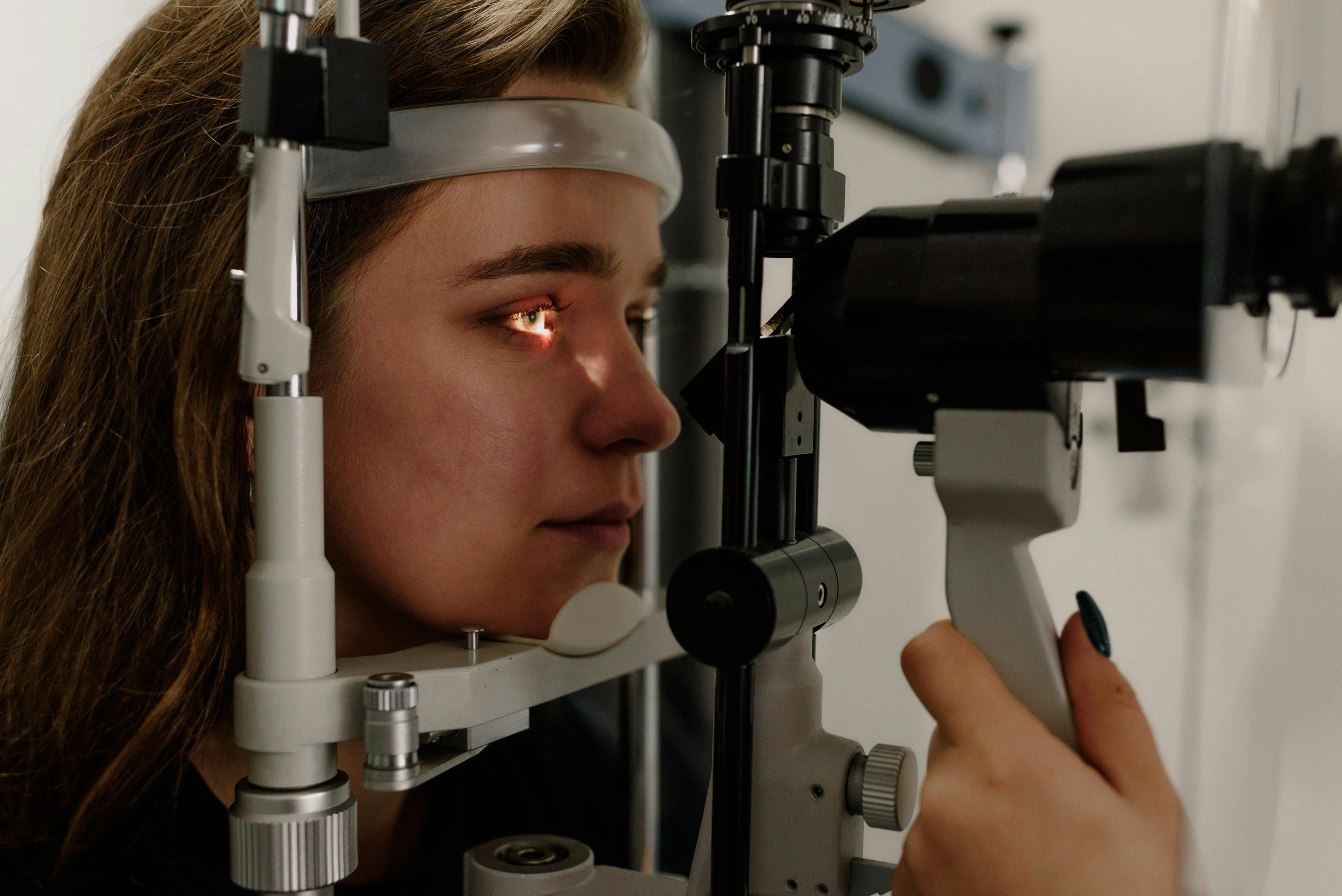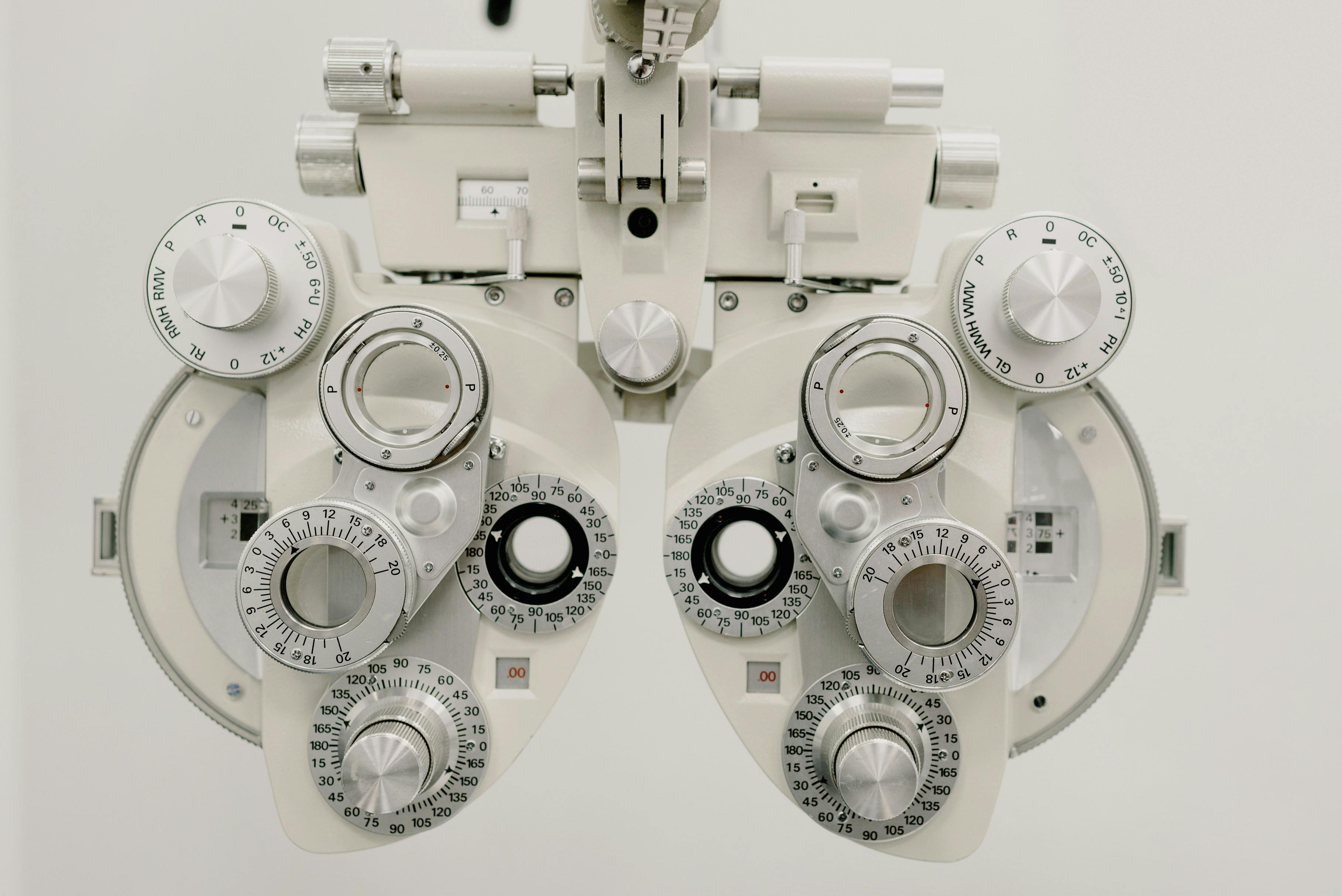
Unleashing the Power of Tests: Exploring Benefits and Pros/Cons
Standardized testing has become an integral part of modern education systems around the world. These tests are designed to evaluate a student's performance and knowledge according to predetermined standards. The topic of standardized testing in education is often debated due to its various benefits and drawbacks. Let's delve into these aspects, to understand how they impact students and the education system as a whole.
Benefits:
1. Objective Evaluation: Standardized tests provide an objective way of assessing student performance uniformly across different schools or districts. They enable educational authorities to measure the effectiveness of the curriculum and identify areas that require improvement.
2. Accountability Measures: Standardized tests can hold schools, teachers, and students accountable for their performances. By assessing students' understanding of the material taught, these tests offer a way to ensure that the education system is meeting its objectives effectively.
3. Benchmarks for Comparison: Standardized tests establish benchmarks for student achievements, allowing comparisons across regions, states, or countries. This information helps policymakers to make informed decisions on education policies and allocate resources appropriately.
4. College Admissions: Standardized test scores often play a crucial role in college admissions processes, helping universities assess students from diverse educational backgrounds using a common standard.
5. Individual Feedback: Through standardized testing, students can receive valuable feedback on their academic strengths and weaknesses. This comprehensive insight helps identify areas requiring improvement or further specialization, aiding both students and educators in academic planning.
Drawbacks:
1. Narrow Focus on Academic Skills: Critics argue that standardized tests primarily measure a limited range of academic skills like reading comprehension and mathematical ability. They tend to overlook broader aspects such as creativity, problem-solving skills, critical thinking, and social-emotional development.
2. Pressure and Stress: Preparing for standardized tests can induce high levels of stress among students due to the immense pressure to perform well. This stress may hinder overall cognitive development and negatively impact mental well-being.
3. Curriculum Narrowing: To perform well on standardized tests, some schools may prioritize "teaching to the test" instead of offering a well-rounded education. This focus might narrow the curriculum by neglecting subjects that are not tested, preventing students from exploring their full potential in various areas.
4. Socioeconomic Bias: Critics claim that standardized tests often reflect biases based on socioeconomic backgrounds, race, culture, or linguistic abilities. Students from disadvantaged backgrounds may face disadvantages due to their unfamiliarity with the test contents or lack of access to adequate resources for preparation.
5. International Differences: Standardized testing may fail to accommodate variations across different education systems around the world. It can be challenging to enforce a uniform standard across diverse cultures, pedagogies, and educational philosophies.
In conclusion, while standardized testing brings various benefits such as objectivity, accountability measures, benchmarking, and college admissions criteria, it also presents drawbacks including a narrow focus on academic skills, pressure and stress on students, biases in evaluation, curriculum narrowing, and difficulties in accommodating international differences. Striking a balance between standardized testing and other holistic assessment methods that capture the diverse skill sets needed for the future workforce is crucial for achieving quality education outcomes.
 Unpacking Personality Tests: Insights or Stereotypes?Personality tests are widely used tools that aim to offer insights into an individual's character, behaviors, and traits. These tests are designed to classify people into specific personality types based on their responses to a structured set of questions. While such assessments may provide valuable insights about various aspects of one's personality, they also carry inherent limitations and potential for stereotypes.
Unpacking Personality Tests: Insights or Stereotypes?Personality tests are widely used tools that aim to offer insights into an individual's character, behaviors, and traits. These tests are designed to classify people into specific personality types based on their responses to a structured set of questions. While such assessments may provide valuable insights about various aspects of one's personality, they also carry inherent limitations and potential for stereotypes.Unpacking personality tests entails delving into the various factors that influence their outcomes and interpreting the insights they offer. These tests typically fall into two categories: self-report inventories and projective techniques. Self-report inventories involve respondents answering questions about themselves, while projective techniques present ambiguous stimuli to elicit participants' subconscious responses.
When it comes to insights obtained from personality tests, it is important to approach them with a certain degree of caution. While they can provide valuable information about a person's traits and preferences, it is crucial to acknowledge that the results represent a momentary snapshot and may not be entirely comprehensive or definitive. Individual traits can evolve over time due to personal growth, experiences, or changes in circumstances.
Additionally, these tests must be interpreted with a critical lens, as they are not foolproof or universally reliable indicators of an individual's personality. They often oversimplify complex human characteristics into distinct categories, leading to generalizations and potentially reinforcing stereotypes. It is essential to remember that each person is unique, and reducing their entire being into prescribed labels can overlook vital nuances in their behaviors and motivations.
Despite these limitations, personality tests can still offer valuable insights when approached with discernment. By identifying patterns in responses or making connections between different aspects of an individual's personality traits, these assessments can help individuals gain self-awareness and understanding. Such insights enable personal growth by highlighting strengths and potential areas for improvement.
The key lies in utilizing these insights as guidelines rather than absolutes. It is important to recognize that no one test can capture the intricacies of an individual entirely. Combining the understanding gained from personality assessments with real-life experiences and self-reflection allows a more authentic and holistic perspective of oneself and others.
To mitigate the risk of stereotypes, it is vital to approach personality tests as tools for exploration and self-discovery rather than rigid categorizations. Instead of focusing solely on prescribed labels, individuals can reflect on the insights gleaned from these tests in combination with their personal narratives and circumstances, thus avoiding confining themselves or others to preconceived notions.
In conclusion, unpacking personality tests involves understanding their limitations while recognizing the potential they hold for providing insights. With a mindful approach that acknowledges individual complexities, personality tests can serve as valuable tools in self-awareness and growth. However, it is essential to resist the temptation to fit into prescribed stereotypes, instead embracing one's uniqueness and allowing room for personal evolution.
 The Digital Shift: Online Testing Pros and Cons in the Educational SphereThe Digital Shift: Online testing Pros and Cons in the Educational Sphere
The Digital Shift: Online Testing Pros and Cons in the Educational SphereThe Digital Shift: Online testing Pros and Cons in the Educational SphereIn recent years, there has been a significant digital shift in various aspects of modern life, and the field of education is no exception. With the advent of online testing, traditional paper-based exams are gradually being replaced by web-based assessments. While this digital shift offers several advantages and has gained popularity, it is vital to consider both the pros and cons associated with online testing in the educational sphere.
Pros:
1. Enhanced Accessibility: One of the major advantages of online testing revolves around increased accessibility. Students can easily access digital tests from any location as long as they have an internet connection. This accessibility allows for greater flexibility for distance learners, enabling them to take exams at their convenience.
2. Immediate Feedback: Another benefit of online testing is the instant feedback mechanism available to both students and educators. Through automated grading systems, students receive their scores immediately after completing an assessment. Likewise, teachers gain insight into student performance more efficiently, facilitating timely interventions when required.
3. Time Efficiency: Online testing often proves more time-efficient compared to traditional paper exams. Online assessments can be administered quickly, take less time for grading due to automated systems, and eliminate logistical constraints like distributing, collecting, and sorting paper-based test materials.
4. Enhanced Test Security: Digital tests offer improved security measures compared to physical exams. Online testing platforms may employ encryption techniques and reduce the chance of cheating through features such as randomizing questions or shuffling answer choices.
Cons:
1. Technical Issues: Perhaps one of the most significant challenges faced during online testing relates to technical issues that can hinder test administration or accuracy. Problems such as internet connectivity disruptions or device malfunctions can significantly impact students' experiences and results. Moreover, technical problems may require immediate troubleshooting by teachers or IT support, drawing attention away from other educational activities.
2. Test-Taking Skills: Online testing typically requires a certain degree of familiarity with digital interfaces, technology, and typing skills. Students who are less comfortable or lack access to technology may experience a disadvantage in comparison to their peers who are more digitally fluent.
3. Cheating Possibilities: While digital platforms strive to minimize cheating opportunities, online testing introduces new concerns. Students may resort to unauthorized resources or engage in communication methods during exams to seek assistance from other individuals, compromising the integrity of the test results.
4. Equity and Accessibility Challenges: The shift towards online testing assumes equity and equal access to technology for all students. However, disparities in resources, such as limited internet connection or devices at home, can negatively affect students' ability to participate fully and perform adequately.
Concluding Thoughts:
The digital shift towards online testing in the educational sphere offers numerous advantages but also poses challenges and drawbacks. It is essential for educational institutions to consider these pros and cons when incorporating online assessments into their teaching methods. Moreover, measures must be taken to address potential issues related to technical problems, equity, and security concerns. By addressing these aspects effectively, educators can harness the benefits of online testing while mitigating its drawbacks effectively.
 Diagnostic Tests in Healthcare: A Double-Edged Sword?In healthcare, diagnostic tests play a crucial role in determining an individual's medical condition or disease. These tests help doctors and clinicians make accurate diagnoses, guiding them in providing appropriate treatment plans and monitoring patient progress. However, diagnostic tests have their pros and cons, making them a double-edged sword in healthcare.
Diagnostic Tests in Healthcare: A Double-Edged Sword?In healthcare, diagnostic tests play a crucial role in determining an individual's medical condition or disease. These tests help doctors and clinicians make accurate diagnoses, guiding them in providing appropriate treatment plans and monitoring patient progress. However, diagnostic tests have their pros and cons, making them a double-edged sword in healthcare.On the positive side, diagnostic tests enable early detection of diseases. They can identify health issues even before apparent symptoms appear, allowing for timely interventions and treatment initiation. This aspect greatly contributes to prevention and disease control, enhancing patients' chances for successful outcomes.
Furthermore, these tests aid in differentiating between various conditions with similar symptoms, resulting in accurate diagnoses. This helps avoid unnecessary invasive procedures or incorrect treatment plans that might cause harm or inconvenience to patients. Diagnostic tests also reduce uncertainty surrounding medical conditions by giving concrete evidence that either confirms or rules out certain diseases.
Additionally, diagnostic tests assist in monitoring patients' responses to treatment or interventions over time. By periodically performing these tests, health professionals can gauge the effectiveness of ongoing therapy and make necessary adjustments if required. This ensures optimal patient care tailored to individual needs.
However, despite their undeniable benefits, diagnostic testing has some inherent drawbacks that need consideration as well. Firstly, these tests are not infallible and can occasionally produce questionable results leading to false-negative or false-positive outcomes. Such discrepancies might cause anxiety and distress for patients, who then undergo additional unnecessary testing or pursue treatments they do not require.
Another concern is the financial burden associated with diagnostic testing. Some elaborate examinations are costly, putting strain on both patients and healthcare systems. Budget constraints may limit access to certain specialized tests for patients who need them most urgently or deprive underserved populations from receiving appropriate diagnoses.
Furthermore, excessive testing can lead to overdiagnosis – identifying abnormalities that might never cause symptoms or adverse health effects during a person's lifetime. This overemphasis on finding potential diseases could lead to overtreatment, exposing patients to unnecessary risks, side effects, and economic burdens. Ultimately, the harm from overtreatment may outweigh the potential benefits.
Moreover, diagnostic tests can result in physical discomfort, inconvenience, or even complications. Procedures involving tissue biopsy, radiation exposure, or invasive techniques can have associated risks or adverse effects. Patients may experience anxiety related to the anticipation of receiving test results or the potential implications arising from these results, impacting their psychological well-being.
In conclusion, while diagnostic tests are invaluable tools in healthcare for early detection, accurate diagnosis, and effective monitoring of medical conditions, they possess inherent drawbacks that deserve attention. Balancing the benefits and risks associated with testing is crucial to maximize patient care while minimizing unnecessary harm. Striving for evidence-based and judicious use of diagnostic tests remains imperative to ensure optimal healthcare outcomes in a double-edged realm.
 Software Testing Fundamentals: Ensuring Reliability and Efficiency in TechnologySoftware testing Fundamentals: Ensuring Reliability and Efficiency in Technology
Software Testing Fundamentals: Ensuring Reliability and Efficiency in TechnologySoftware testing Fundamentals: Ensuring Reliability and Efficiency in TechnologySoftware testing is an essential part of software development and plays a crucial role in ensuring the reliability and efficiency of technology products. It involves the systematic verification and validation process that evaluates various aspects of software to identify defects, bugs, and any potential risks.
Reliability is a fundamental objective when testing software. It aims to assure that the software functions as intended, consistently delivering accurate outputs under different scenarios. By meticulously identifying and resolving defects, the testing process enhances the reliability of technology systems, minimizing recurrences of errors or failures.
Efficiency, on the other hand, focuses on evaluating software performance in terms of speed, responsiveness, resource utilization, scalability, and overall optimization. A well-tested software application must be able to handle varying workloads efficiently, meet response time expectations while utilizing computing resources effectively.
Software testing follows a structured approach, beginning with defining clear objectives and test plans based on specific requirements. This process includes creating test cases—test scenarios designed to exercise software features—from functional to non-functional areas like performance and security. Test cases document input values, expected results, and outcomes that are validated against actual output during execution.
Numerous types of tests contribute to comprehensive testing:
1. Functional Testing: Checks whether the software functions according to the specified requirements.
2. Regression Testing: Identifies any new defects caused by recent modifications in the code or system configuration.
3. Integration Testing: Verifies the correct functioning of integrated components or modules within the system.
4. Performance Testing: Evaluates system speed, load capacity, scalability, and responsiveness under expected workloads.
5. Security Testing: Identifies vulnerabilities or weaknesses in a system that could compromise data security.
6. Usability Testing: Assesses how easily users can interact with the software interface and perform desired tasks.
7. Compatibility Testing: Ensures proper functioning across different devices, platforms, browsers, or networks.
During execution, testing involves running test cases, examining outputs, and comparing them against expected results. Any inconsistencies or deviations are regarded as defects and subsequently reported for resolution. This phase may also require effective defect management, including tracking, prioritizing, and executing corrective actions, aids in improving the reliability and efficiency of the system.
Software testing often uses automated tools that streamline repetitive tasks and provide a framework for efficient test execution. These tools can help execute test cases, identify defects, generate reports, and boost productivity as they reduce manual effort.
Overall, software testing fundamentals play a critical role in ensuring that technology-based systems meet expectations in terms of reliability, efficiency, usability, security, and compatibility. By allocating time and resources to robust testing approaches, organizations can avoid expensive and reputation-damaging issues caused by failures or errors in software applications.
 Psychological Assessments: Tools for Understanding or Labels for Limiting?test. Psychological Assessments: Tools for Understanding or Labels for Limiting?
Psychological Assessments: Tools for Understanding or Labels for Limiting?test. Psychological Assessments: Tools for Understanding or Labels for Limiting?Psychological assessments are procedures used to gather information about an individual's psychological characteristics, cognitive abilities, personality traits, and emotional functioning. Designed as a diagnostic tool, they aim to provide valuable insights into one's behavioral patterns, thoughts, and overall mental health. However, the interpretation and use of these assessments can either serve as a beneficial tool for personal growth or as restrictive labels that limit opportunities.
When used properly, psychological assessments offer a range of advantages. Firstly, they can help identify and define specific difficulties or disorders in an individual's mental health. These assessments enable professionals to construct a comprehensive profile of someone's psychological makeup, supporting diagnosis and decision-making regarding appropriate treatment strategies. Moreover, assessments can shed light on an individual's strengths and weaknesses, allowing practitioners to develop personalized interventions that maximally enhance well-being and highlight potential areas for improvement.
One crucial application of psychological assessments is in educational settings. Assessments assist in identifying learning disabilities or intellectual giftedness, leading educators to tailor teaching methods to better suit each student's needs. By understanding a student's cognitive abilities and learning style through assessments, teachers can create inclusive learning environments that foster overall academic success.
However, it is essential to examine the potential limitations and controversies surrounding psychological assessments. Critics argue that these evaluations sometimes oversimplify complex human behaviors by reducing individuals to mere labels. This labeling process might restrict an individual's self-perception and perpetuate societal biases or stigmas associated with certain diagnoses.
Moreover, some argue that using assessments as single-thesis instruments neglects the multifaceted nature of human psychology. While they provide objective data points, any assessment must be considered in conjunction with clinical judgment and contextual factors. Overreliance or misinterpretation of assessments can result in inadequate treatment plans or unfair judgments based solely on a few evaluation scores.
Nevertheless, when correctly integrated into comprehensive assessment approaches, psychological evaluations offer valuable insights. They can empower individuals by fostering self-awareness, enhancing understanding of their unique qualities, and promoting personal growth. By viewing evaluations as dynamic tools rather than static definitions, they serve not to restrict lives with labels but rather to facilitate immense possibilities for growth and development.
In conclusion, psychological assessments possess immense potential when carefully utilized and interpreted. While they can aid diagnosis, tailor interventions, and enhance educational experiences, it is crucial to approach these assessments holistically. Regarded as tools for understanding rather than labels for limiting, they open doors for personal development, helping individuals become the best versions of themselves.
 The Evolution of Employment Screening: From Resumes to Psychometric TestsThe Evolution of Employment Screening: From Resumes to Psychometric tests
The Evolution of Employment Screening: From Resumes to Psychometric TestsThe Evolution of Employment Screening: From Resumes to Psychometric testsIn the current era of hiring, employment screening has undergone a significant transformation. Gone are the days when hiring decisions were solely made based on resumes and interviews. Today, employers rely on various tools and techniques to assess the suitability of candidates for a particular role.
Resumes, undoubtedly, are an essential part of job applications. They provide a snapshot of a candidate's professional history, accomplishments, and qualifications. However, relying solely on resumes has its limitations. Resumes often highlight a person's strengths while downplaying any weakness or areas for improvement.
Recognizing this limitation, many organizations have turned to psychometric tests as a means to gain insights into an applicant's personality traits, cognitive abilities, and emotional intelligence. These tests allow employers to evaluate candidates objectively and make more informed hiring decisions.
Psychometric tests come in different forms, such as personality tests, aptitude tests, and situational judgment tests. Personality tests aim to measure characteristics like extraversion, emotional stability, conscientiousness, and openness to experience. Aptitude tests assess a candidate's aptitude in areas like numerical reasoning, verbal reasoning, and logical reasoning. Situational judgment tests evaluate how candidates handle work-related scenarios and make decisions under pressure.
By incorporating psychometric testing into their hiring processes, employers gain several advantages. These tests help them identify candidates who possess the skills and attributes needed for success in a particular role or in the organization as a whole. Psychometric testing goes beyond what can be deduced from a candidate's resume alone and provides valuable insights into their potential work behavior and performance.
However, it is crucial for organizations to use psychometric tests ethically and with discretion. Validity and reliability are important considerations when choosing or developing these assessments. Test results should never be the sole factor in determining a candidate's suitability for a job; other factors like experience and cultural fit should also be taken into account. Furthermore, it is essential to consider the potential biases that may exist within psychometric tests and work towards ensuring the fairness and equity of the hiring process.
As technology continues to advance, the future of employment screening is likely to incorporate even more innovative tools. Artificial intelligence (AI)-driven algorithms and machine learning models are being developed to analyze large amounts of data from different sources, such as social media profiles, to gain a deeper understanding of candidates. Additionally, virtual reality assessments might become prevalent, providing employers with simulations to evaluate candidates' skills in a realistic work environment.
In conclusion, the evolution of employment screening has shifted from purely relying on resumes to incorporating psychometric tests. This change has enabled employers to make more informed decisions about candidates based on a holistic view of their skills, abilities, and potential. As technology continues to shape and advance the recruitment landscape, it is crucial for organizations to use these tools in an ethical and fair manner to ensure a diverse and high-performing workforce.
 Fitness Testing for Personal Health: Motivation vs. ObsessionFitness testing for Personal Health: Motivation vs. Obsession
Fitness Testing for Personal Health: Motivation vs. ObsessionFitness testing for Personal Health: Motivation vs. ObsessionOne key aspect of achieving personal health and overall fitness is understanding the importance of fitness testing. Fitness testing provides valuable insights into an individual's current fitness levels, helps set realistic goals, and assists in developing tailored exercise routines. However, it is essential to strike a balance between utilizing fitness testing for motivation without falling into dangerous obsessions. In this blog post, we will delve into the topic of Fitness Testing for Personal Health and explore the fine line between motivation and obsession.
Fitness testing serves as a tool to assess an individual's physical performance, endurance, strength, flexibility, and body composition. It involves various assessments like cardiovascular endurance tests, strength tests, flexibility tests, body fat percentage measurements, and more. The results gathered from these tests help individuals understand where they currently stand on the fitness spectrum.
With these results in hand, individuals can set specific and achievable goals, which serve as a major motivational factor to improve their overall health. Using these benchmarks as inspiration can push individuals to work harder, stay committed to their exercise routine, and track their progress over time. Regular fitness testing creates a sense of accountability by allowing individuals to monitor how far they've come and how close they are to reaching their goals.
However, there is a fine line between using fitness testing as motivation and becoming obsessed with the numbers on the scale or stopwatch. Motivation stems from a desire to improve oneself and lead a healthy lifestyle while enjoying the process. On the other hand, obsession revolves around relentless pursuit of perfection at the cost of one's mental or physical well-being.
The dangers of becoming obsessed with fitness testing lie in pushing oneself too hard without allowing for proper rest and recovery. Overtraining can lead to burnout, injuries, mental exhaustion, imbalances in one's personal life, and even negative self-esteem if the desired results aren't met consistently. Obsession may even manifest itself in harmful behaviors such as extreme caloric restriction, excessive exercise, or obsessing over body image.
It is crucial to remember that fitness testing is just a tool in the journey towards personal health, and while it provides powerful insights, it should not dictate one's self-worth. Putting too much emphasis on obtaining certain scores or measurements can lead to ignoring other essential aspects of well-rounded fitness. Mental and emotional well-being, social connections, and healthy habits outside of exercise also play significant roles in overall personal health.
To prevent crossing the line from motivation to obsession, individuals should practice self-awareness. This means recognizing the signs of obsession such as an all-or-nothing mindset, excessive guilt or anxiety when unable to meet goals, or neglecting other areas of life due to extreme focus on fitness test results. Regularly reassessing personal goals and seeking support from professionals, such as certified trainers or healthcare providers, can help maintain a healthy perspective on fitness testing.
In conclusion, fitness testing is a beneficial tool for monitoring progress and setting goals in the pursuit of personal health. It provides motivation by enabling individuals to track their progress, celebrate achievements, and stay committed to their exercise routines. However, it is essential to recognize when this enthusiasm becomes an unhealthy obsession. By practicing self-awareness and maintaining a holistic approach towards wellness, individuals can enjoy the benefits of fitness testing without succumbing to dangerous obsessions.
 Environmental Testing: Our Weapon Against Pollution or Yet Another Source of Anxiety?Environmental testing is a crucial field of study and action aimed at assessing the impact of human activities on the environment. It involves the thorough examination of various elements, such as air, water, soil, and biodiversity, to identify potential pollutants and contaminants. These tests are essential to understand the level of pollution present in our surroundings and develop suitable strategies to combat it effectively.
Environmental Testing: Our Weapon Against Pollution or Yet Another Source of Anxiety?Environmental testing is a crucial field of study and action aimed at assessing the impact of human activities on the environment. It involves the thorough examination of various elements, such as air, water, soil, and biodiversity, to identify potential pollutants and contaminants. These tests are essential to understand the level of pollution present in our surroundings and develop suitable strategies to combat it effectively.Air testing is one aspect of environmental testing that focuses on monitoring the quality of the air we breathe. It helps measure the concentration of harmful substances like particulate matter, volatile organic compounds (VOCs), and various gases such as nitrogen oxide, carbon monoxide, and sulfur dioxide. By identifying pollutant levels, researchers and policymakers can address issues related to air pollution and devise strategies for its reduction.
Water testing aims to evaluate the quality and safety of various water sources, including rivers, lakes, groundwater, and wastewater. Through water testing, scientists determine the presence of toxins, heavy metals, pathogens, or excessive nutrient content that can harm aquatic life or be detrimental to human health. Additionally, it enables assessments regarding the suitability of water for drinking, irrigation, or industrial use.
Soil testing plays a critical role in understanding soil composition and assessing its fertility as well as contamination levels. This type of environmental test examines factors such as pH level, nutrient content, organic matter content, and the presence of heavy metals or pesticides residues. By evaluating soil health status through such testing measures, scientists can guide sustainable agricultural practices and remediation steps for polluted soil.
Another vital component of environmental testing is biodiversity assessment. It involves studying plant and animal species’ diversity in a particular ecosystem and identifying any changes or declines that may indicate an adverse environmental impact. Through this process, scientists can document the effects of pollution on different ecosystems and promote conservation efforts where needed.
Environmental testing serves as our weapon against pollution by providing data-driven evidence that fosters environmental awareness and protective actions among individuals and communities. It empowers policymakers to devise stringent regulations and policies to reduce pollution sources and enforce industry compliance. Additionally, the information resulting from environmental testing helps researchers identify emerging pollutants or long-term trends, enabling them to tackle environmental challenges proactively.
However, environmental testing can also be a source of anxiety for some individuals who become aware of the potential threats to their health and the well-being of their environment. Learning about high pollutant levels in the vicinity can instill fear and worry, especially if immediate solutions are not readily available. This anxiety prompts people to seek changes in their habits and advocate for improvements in industries and government practices to combat pollution effectively.
In conclusion, environmental testing serves as an important tool in our fight against pollution. It allows scientists and policymakers to understand the scope of environmental degradation caused by human activities and find solutions catered to specific issues in air, water, soil, and biodiversity. While acting as a transformative force for positive change, it also generates anxiety due to the knowledge of potential risks. Finding a balance between using the outcomes of environmental testing positively and managing anxieties is essential to ensure a sustainable future.
 Aptitude Tests for Career Guidance: Helpful Hints or Restrictive Presumptions?Aptitude tests for career guidance aim to help individuals in making informed choices about their future professions. These assessments gauge a person's inherent abilities, strengths, and weaknesses, aiding in identifying suitable career paths. However, whether these tests offer helpful hints or impose restrictive presumptions remains a subject of debate.
Aptitude Tests for Career Guidance: Helpful Hints or Restrictive Presumptions?Aptitude tests for career guidance aim to help individuals in making informed choices about their future professions. These assessments gauge a person's inherent abilities, strengths, and weaknesses, aiding in identifying suitable career paths. However, whether these tests offer helpful hints or impose restrictive presumptions remains a subject of debate. Proponents argue that aptitude tests provide valuable insights into one's potential educational and professional endeavors. By measuring critical thinking skills, problem-solving capabilities, and logical reasoning, these assessments can guide individuals towards career paths that align with their natural talents. Such test results can also assist in determining which areas require further development or education.
Opponents suggest that aptitude tests may limit individuals' options by offering preconceived notions about their abilities and interests. They contend that such tests favor specific skill sets and might neglect other essential qualities such as creativity, empathy, or communication skills. While these tests do assess certain intellectual capacities, they may not capture an individual's complete personality or determine their overall promoptifications quotient for success in a profession.
Critics also argue that aptitude tests can be influenced by cultural bias, ultimately affecting the results and perpetuating inequalities. Since some questions may assume a particular context or background knowledge, test-takers from diverse cultural backgrounds may face disadvantages when compared to those more familiar with the test's implicit assumptions.
Supporters emphasize the efficacy of aptitude tests in narrowing down career possibilities for individuals who may be unsure about their occupational aspirations. Personalized feedback from such assessments empowers candidates to make more informed decisions when it comes to higher education and career planning.
On the other hand, opponents propose alternative methods of career guidance such as mentorship programs or immersive internships. They embrace a more holistic approach that considers an individual's interests, values, and unique experiences rather than relying solely on standardized aptitude tests.
Given these perspectives, it is crucial to recognize the limitations of aptitude tests while acknowledging their usefulness as a tool in the career guidance process. Combining aptitude test results with supplementary information and personal reflection tends to provide more robust insights and better equip individuals in making smart career choices.
Ultimately, the effectiveness of aptitude tests for career guidance lies in their ability to inform, but not limit, the decision-making journey. An open-minded approach that integrates multiple resources can help individuals discover professions that not only align with their abilities but also lead to overall satisfaction and fulfillment in their chosen careers.
 Assessing Learning Styles Through Testing: Empowering Students or Cementing Biases?Assessing Learning Styles Through testing: Empowering Students or Cementing Biases?
Assessing Learning Styles Through Testing: Empowering Students or Cementing Biases?Assessing Learning Styles Through testing: Empowering Students or Cementing Biases?Understanding how each student learns best is a fundamental aspect of education. It allows teachers to tailor their instruction, helps students optimize their learning experience, and ultimately aims to enhance educational outcomes. One method commonly employed to determine individual learning styles is through testing. However, the practice of assessing learning styles through testing has proven to be a contentious topic, sparking debates about whether it empowers students or reinforces biases.
On one hand, proponents argue that testing can indeed empower students by providing valuable insights into their unique learning preferences. By identifying if a student is an auditory, visual, or kinesthetic learner, for example, educators can adapt their teaching methods to cater to different styles more effectively. This approach strives to create inclusive learning environments and foster equitable opportunities for all students.
Those in favor of assessing learning styles through testing believe that it can help students become aware of their own strengths and strategies that work best for them. Armed with this self-understanding, students may feel more confident participating in class discussions, developing effective study techniques, and advocating for their optimal learning conditions.
However, critics argue that relying solely on testing to assess learning styles can lead to the cementation of biases and perpetuate educational inequality. First and foremost, these examinations oversimplify the intricate process of learning into rigid categories, failing to acknowledge the complexity and diversity of human cognition. Additionally, by labeling individuals according to narrowly defined learning styles, we risk boxing them into fixed identities that may limit their potential growth and adaptability.
Furthermore, societal patterns and stereotypes can deeply influence test results on assessing learning styles. Students coming from disadvantaged backgrounds may have fewer opportunities to develop certain preferences due to limited resources or systemic barriers. Drawing definitive conclusions about a student's learning style based on such assessments might only reinforce preconceived biases and hinder educational inclusivity.
It is crucial to recognize that individuals are not static beings. Learning is a dynamic and multifaceted process, influenced by various factors such as context, motivation, and experience. By solely relying on testing, we risk neglecting these crucial variables and pigeonholing students into limited boxes.
In conclusion, the practice of assessing learning styles through testing continues to fuel opposing viewpoints. While proponents argue that it empowers students by tailoring instruction to their preferences, critics caution against cementing biases and undermining inclusive education. Striking a balance between recognizing individual differences and avoiding oversimplification is vital in ensuring equitable and effective teaching practices. Ultimately, teachers must consider multiple sources of information to appreciate diverse learning needs fully and create adaptable educational environments that foster growth for all students.The Impact of Test Preparation Industry on Academic InequalityThe Impact of test Preparation Industry on Academic Inequality
In recent years, the test preparation industry has gained significant momentum, constantly expanding its influence on academic performance and entrance assessments in educational systems worldwide. While providing a range of study materials, courses, and private tutoring, the test preparation industry has undoubtedly left an undeniable mark on academic inequality.
Firstly, it is important to understand that these resources come at a cost, which means those with financial means have a greater advantage: access to better study materials and more sophisticated learning experiences. Affluent families can afford to invest significant amounts of money into test prep courses or hire personal tutors. Consequently, students who do not have access to these resources are at a clear disadvantage in terms of receiving thorough test preparation.
Moreover, the test preparation industry thrives on the notion that higher scores translate into higher education opportunities and eventual professional success. This perpetuates a meritocratic system where students who can afford better resources outperform their peers, often securing admission to prestigious educational institutions or scholarship opportunities. The outcome is an exacerbation of existing academic inequality based on socioeconomic status, since disadvantaged students simply do not have equal access to these advantages.
Additionally, the intense focus on standardized testing as a prerequisite for college admissions further amplifies the influence of the test preparation industry. Many educational institutions rely heavily on performance in these exams when evaluating potential students. As such, the fear of underperforming and jeopardizing future academic paths prompts students and their families to invest significant time and money in preparing for these exams.
Ironically, this incessant focus on standardized testing creates additional burdens for vulnerable populations. Students from low-income or marginalized backgrounds often cannot allocate as much time and financial resources for preparing as their wealthier counterparts. Consequently, they may encounter persistent difficulties achieving high scores, even if they possess incredible intelligence and potential.
Furthermore, when institutions place an excessively high value on standardized exams results, they tend to overlook other important aspects of student evaluation, such as their creativity, critical thinking abilities, and potential for growth. By continuing to prioritize a narrow set of criteria determined by standardized tests, educational institutions inadvertently deepen the roots of academic inequality.
In conclusion, the test preparation industry undoubtedly plays a significant role in perpetuating academic inequality by further dividing students based on their socioeconomic background. The financial privilege enjoyed by some families grants them access to more comprehensive resources, ultimately favoring their children's scores and ensuing opportunities. In this way, the impact of the test preparation industry resonates throughout educational systems and disadvantages countless students who are unable to even the playing field.
 Competency Tests for Professional Licenses: Guarantees of Quality or Barriers to Entry?Competency tests for professional licenses, a widely debated topic that piques the interest of many, intrigue whether they truly guarantee quality or merely act as barriers to entering specific professions. This blog will delve into both perspectives, exploring the notions for and against these competency tests without relying on numbered lists.
Competency Tests for Professional Licenses: Guarantees of Quality or Barriers to Entry?Competency tests for professional licenses, a widely debated topic that piques the interest of many, intrigue whether they truly guarantee quality or merely act as barriers to entering specific professions. This blog will delve into both perspectives, exploring the notions for and against these competency tests without relying on numbered lists.To begin with, it is evident that competency tests are designed with the intention of ensuring the quality and competence of individuals seeking professional licenses. Proponents argue that these tests serve as crucial prerequisites, assuring public safety and protection by assessing an applicant's knowledge and abilities in their respective fields. In this sense, such examinations act as a safeguard against underqualified or incompetent individuals jeopardizing public welfare due to their lack of aptitude.
Moreover, those in favor contend that competency tests provide clients and consumers a level of assurance when seeking professional services. With licensed professionals having passed stringent assessments, it instills confidence in clients regarding the expertise of these practitioners. This concept transfers well to various fields, ranging from medicine and law to engineering and accounting; creating an almost indisputable argument for the credibility and trustworthiness conferred by these examinations.
On the other side of the argument lie critics who view competency tests as unnecessary hurdles acting as barriers to entry rather than upholding quality standards. These individuals believe such assessments disproportionately filter out applicants who could otherwise excel once given an opportunity. It is posited that practical experience and academic education should be the primary factors in evaluating competence rather than relying on standardized tests alone.
Opponents further argue that some individuals may be excluded due to personal circumstances that hamper their ability to prepare adequately for these time-consuming exams. Financial constraints, family obligations, or other challenges unquestionably hinder preparation time and resources for aspiring professionals. By maintaining strict reliance on these comprehensive competency tests, potential talents could never "break through" due to limitations beyond their control.
Additionally, experienced professionals, especially those from foreign countries seeking licensure elsewhere, often face unique obstacles. Their skills and capabilities may differ from conventional exam content or may be difficult to evaluate with a standardized test. Consequently, competency tests may discourage competent professionals from re-entering the workforce, leading to inefficiencies in skill utilization and contributing to talent shortages.
Therefore, the debate on whether competency tests guarantee quality or act as barriers to entry is multifaceted. While advocates emphasize the importance of maintaining rigorous standards, critics question their efficacy and potential discriminatory nature. While it is crucial to ensure public safety and trust in professional services, perhaps finding a balance by considering multiple factors beyond exam performance could lead to enhanced fairness without compromising on quality standards.
In conclusion, the topic of competence tests for professional licenses sparks thought-provoking discussions worldwide. The presence of these assessments elicits questions regarding the best methods of evaluating competence while ensuring equal opportunities for individuals with diverse backgrounds. Striving for a nuanced perspective that incorporates practical experience, education, and adaptability within licensing processes may yield a fairer playing field, striking a balance between guaranteeing quality and avoiding overly restrictive barriers to entry.
 tests play a crucial role in various areas of life, serving as assessments, evaluations, or examinations in a wide array of contexts. In education, tests determine a student's knowledge and understanding of a particular subject. Standardized tests are standardized assessments that are administered and scored in a consistent manner to ensure fairness. High-stakes tests can significantly impact an individual's academic or professional future.
tests play a crucial role in various areas of life, serving as assessments, evaluations, or examinations in a wide array of contexts. In education, tests determine a student's knowledge and understanding of a particular subject. Standardized tests are standardized assessments that are administered and scored in a consistent manner to ensure fairness. High-stakes tests can significantly impact an individual's academic or professional future.Outside of education, tests are employed for various purposes. In healthcare, medical tests and screenings assist in diagnosing diseases, monitoring health conditions, or prescribing appropriate treatments. These tests encompass blood tests, X-rays, MRIs, EEGs, and many more depending on the specific medical needs.
In the employment sector, aptitude tests help assess an individual's skills and suitability for a particular job role. Personality tests test an individual's traits, behaviors, and characteristics to evaluate their fit within an organization or team dynamics.
Within the realm of technology, software testing is carried out to identify any faults or bugs in the software code before its deployment. It ensures quality control and optimal performance. Usability testing aims to gauge how user-friendly a product or interface is by observing real users interacting with it.
Moreover, cognitive and psychological assessments ascertain intelligence levels, personality traits, emotional stability, social skills, and other psychological aspects. These evaluations aid psychologists in understanding an individual's mental state or guide therapy and counseling sessions.
Students often face exams conducted in classrooms or lecture halls. These traditional exams typically consist of multiple-choice questions or essay prompts to gauge comprehension and critical thinking skills. Open-book exams permit references while taking the test, whereas closed-book exams demand students recall information from memory.
Overall, tests come in myriad forms serving diverse objectives across different domains. They can measure knowledge retention and application abilities while determining suitability for educational programs or professional positions. Effective test design fosters accurate evaluation and informs decisions with valuable insights regarding an individual's capabilities and potential for growth.
